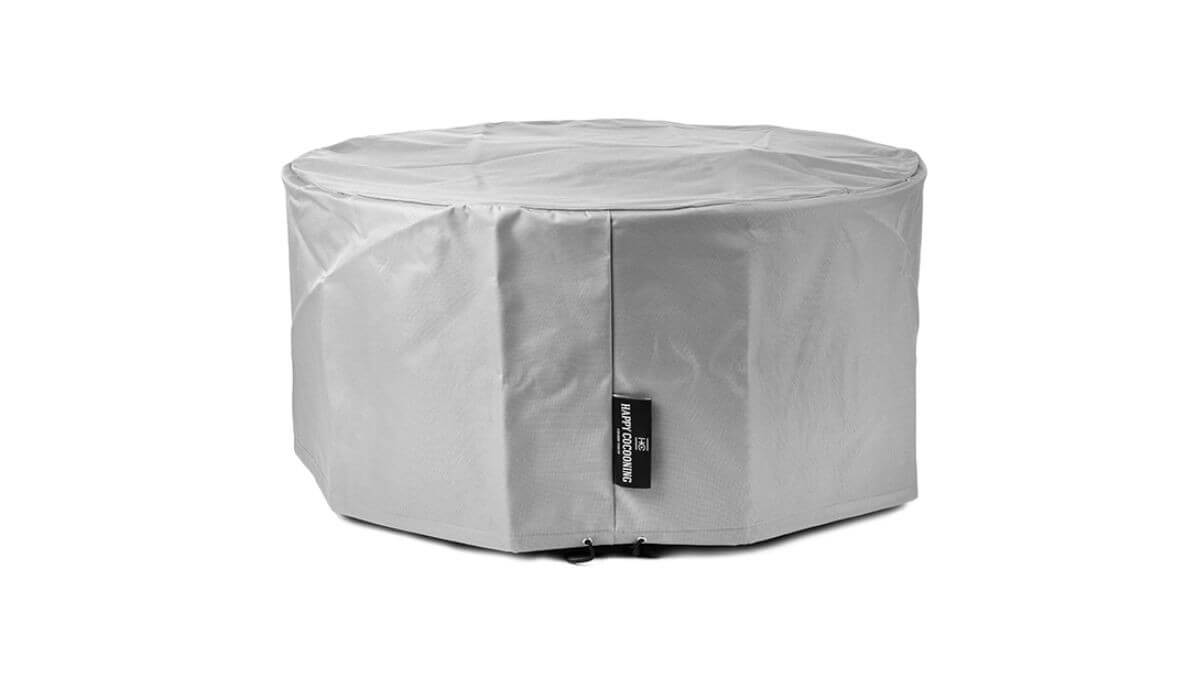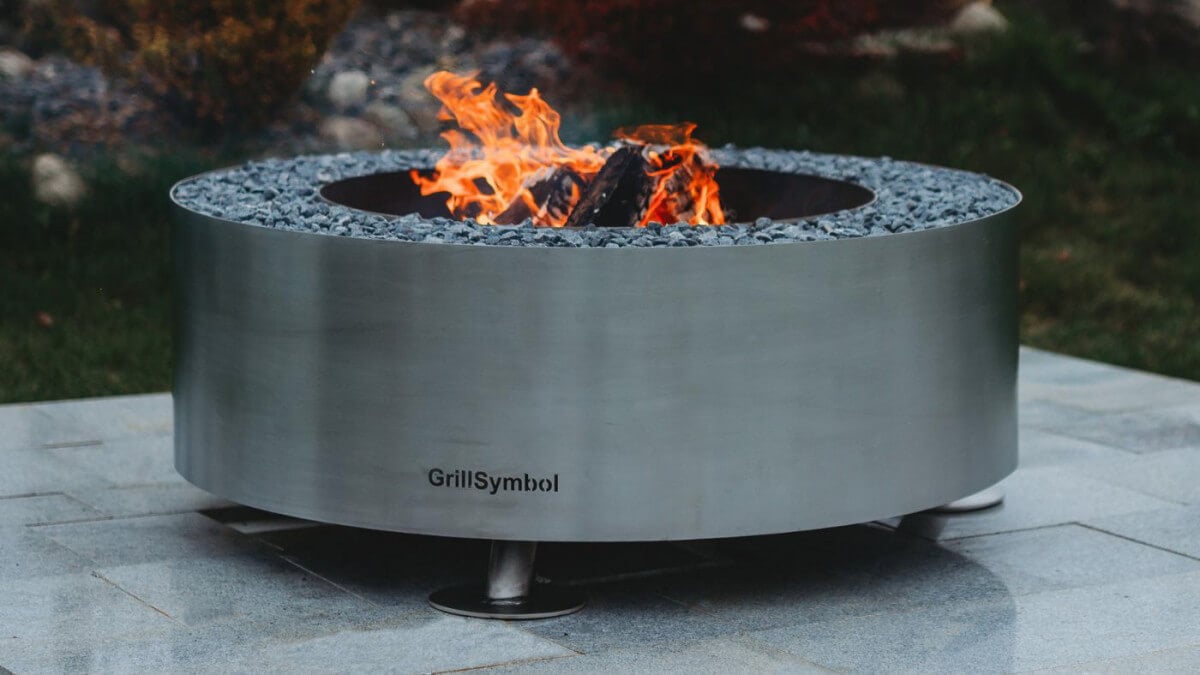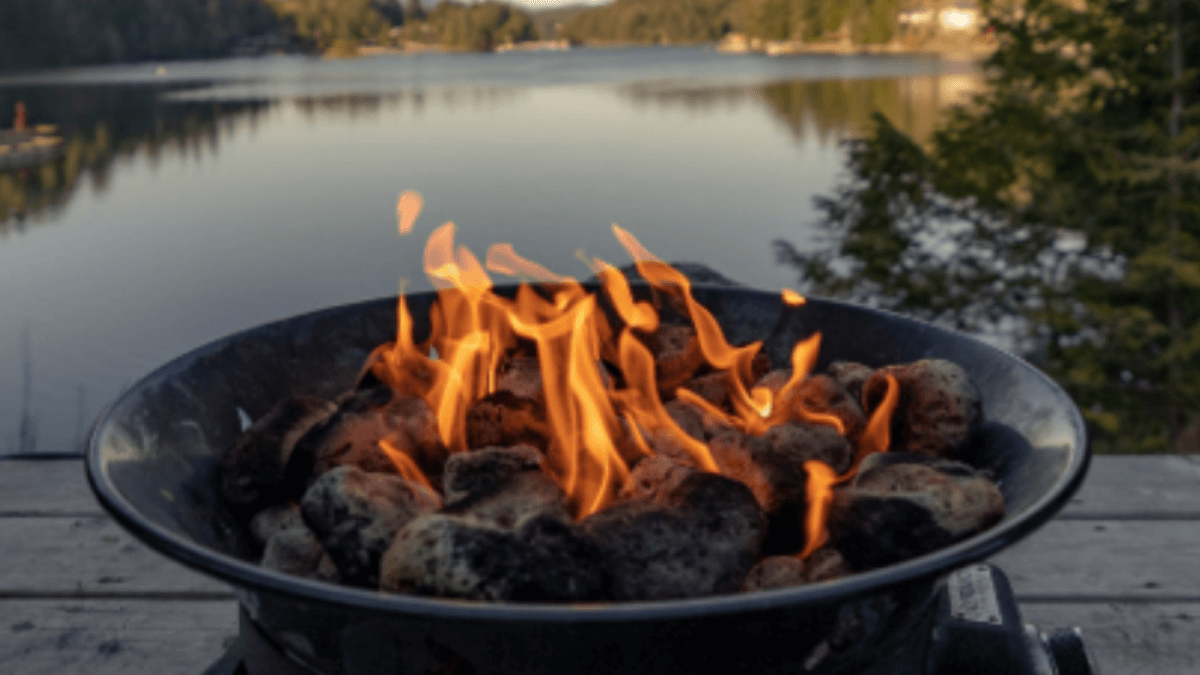So, you’ve finally taken the plunge and bought yourself a fire pit! Now you’re wondering, however – a fire pit cover. Do I need one?
Even if you haven’t yet taken the plunge with a fire pit, this is an important question to ask, and not necessarily one that is as simple as you might think to answer.
Not to worry. We’re here to break down exactly what you need to consider, helping you work out whether you do or don’t need a fire pit cover.
Let’s dive in.
Do I Need a Fire Pit Cover?
A fire pit cover is recommended to prolong your fire pit's life and keep maintenance low. However, there is an exception, as you will see below.
There are a few factors that determine whether a cover for your fire pit is a necessity or not. It depends on the material, the type of fire pit, where you tend to keep it, what the weather is usually like in your area, and so on.
What Happens If You Don’t Cover Your Fire Pit?
There are plenty of things you want to protect your fire pit from. Here are our top 5 reasons to cover a fire pit:
-
Weather – the weather is the number one reason for needing a cover for your fire pit. Especially in the UK, where we usually get all four seasons in one day! Changes in heat and moisture are the two main killers of just about every material you can think of and will reap havoc on your fire pit if left to batter it freely.
-
Leaves - especially troublesome in autumn and winter; they can get everywhere. A cover for your fire pit keeps them from flying into every small nook or cranny and keeps cleaning to a minimum.
-
UV Rays – you may think you can leave your fire pit uncovered when it is sunny. Unfortunately, this isn’t the case, as the sun's UV rays also damage most types of material. It is good to know that some of the more expensive fire pit materials are UV resistant.
-
Insects – it might sound crazy, but fire pits can provide nice little homes for many insects. Wasps’ nests are found more often than you think in uncovered fire pits. Not only can this be dangerous the next time you come to use the fire pit, but the nest could also damage the fire pit – particularly the delicate pipes and valves on gas fire pits.
-
Rodents – similarly, rodents like the shelter fire pits can provide. They’re also good at chewing through rubber elements and wire and like making a mess.
GrillSymbol Cover for Paella Gas Burner
Types of Fire Pits
First, let’s go through the different types of fire pits you can get and our recommendation for which need a fire pit cover:
Gas Fire Pits – gas fire pits burn propane or natural gas as their fuel source. They can be very susceptible to the weather, especially rain, because of their internal electrics and the metal valves you find on most.
Moisture in the system can cause problems and incur repair bills, or a replacement is a real possibility.
Bioethanol Fire Pits – Unlike gas fire pits, bioethanol usually doesn't have electronics and is much more robust against the wet. Just like our recommendation for gas fire pits, a cover should be used if there is an electronic starter.
However, covers are not essential in most cases, but they will help protect your investment and lower the cleaning required to keep the fire pit looking fresh. Bioethanol fire pits are fantastic for indoor use, too, where they won't need a cover!
Wood Burning Fire Pits are typically your fire bowls and fire baskets. You can get them in various materials, some requiring covers, some less so. The different types are:
Traditional Clay Chimeneas - we recommend that all chimeneas have a cover to protect them from extreme weather. Water and ice are the enemies of a clay chimenea. You should avoid both if you want to prolong the life of the chimenea.
A low-cost chimenea cover will help keep the rain off, and another tip is never to light up a wet chimenea; always ensure it's fully dry. After all, you don’t want them cracking!
Steel or Cast Iron Fire Pits will fair better, particularly if treated, but rust is the enemy of all metal fire pits, and covering them up is a great way to protect them for longer.
The big caveat (that we cover in more detail below) is corten steel fire pits. These should not be covered!
Stainless Steel Fire Pit: Stainless steel is an excellent material and rarely rusts. We still recommend using a fire pit cover to protect you from other elements. Although not essential, it will keep your fire pit looking fresh and lower the cleaning and maintenance required.
Gardeco Chimenea Cover
The Big Caveat! Corten Steel Fire Pits
The one big caveat when discussing fire pit covers, and whether you need one is Corten Steel Fire Pits.
Corten steel is designed to produce a layer of protective rust around itself. This rust is a stabilised oxidation that gives corten steel its unique reddy orange aesthetic and makes it one of the most durable materials for building.
This rust layer is only produced by exposing the metal to the elements; rain, sun, wind, all the things we’ve been discussing avoiding. So, covering them up would hinder this process. It would also cause the rust layer that forms to be uneven, which weakens its protection.
We love a good corten steel fire pit – they’re durable, require little to no maintenance, and they really are gorgeous to behold.
Should I Use a Fire Pit Cover?
| Type | Recommended | Preferable | Not Required |
| Clay Fire Pit | X | ||
| Stainless Steel | X | ||
| Corten Steel | X | ||
| Mild Steel | X | ||
| Cast Iron | X | ||
| Gas Fire Pit | X | ||
| Bioethanol Fire Pit | X |
How to Choose The Right Fire Pit Cover For Your Fire Pit?
Knowing if you need a fire pit cover is step 1. Next, you need to think about what type of cover to get.
Most brands come with their own covers, which are great as you know you will get a cover that fits your fire pit perfectly.
However, there are a few types of cover to consider, so let’s dive into them…
Snuffer Lids – these are specifically designed to help you put out your fire by starving the flames of oxygen rather than particularly protecting the fire pit from the elements.
They’re useful for keeping out rodents, insects, and other debris like fallen leaves and branches. But they won’t protect from wind and rain.
Cook King Lid
Screen Covers – screen covers serve two very useful purposes. They keep debris out of the fire pit and protect you when the fire is burning from sparks or flying embers. They don’t protect the fire pit in any way from the elements.
Cook King Mesh Cover
Stainless Steel Gas Burner Covers are usually stainless steel covers that seal and protect the gas burner. These replace any fire screen and ceramic wood and ensures that leaves and debris are kept out. These are often supplied with the gas fire pit or as an optional extra and are built to perfectly fit the space. These are often used in conjunction with a fabric cover.
Stainless Steel Gas Burner Cover
Fabric Covers are your fire pit's cheapest, most common, and most practical covers. They do exactly what you want and expect them to, which is to protect it from the weather.
They are made from weather-resistant materials, are lightweight, and come in a massive range of sizes, so you can be sure you can find one that fits your fire pit.
Ideally, you want a full-length cover in order to fully protect your fire pit.
Safety Considerations
Remember to ensure the fire pit heat has cooled before using the fire pit cover, especially the fabric covers!
Final Thoughts
On reflection, there is a fairly simple answer to whether you need a fire pit cover. The answer is yes! With one very strong caveat for corten steel fire pits that absolutely do not.
We have a fantastic range of fire pit covers for our incredible products. We have no doubt you’ll be able to find exactly what you are looking for, and if you ever have any questions, please don’t hesitate to get in touch.
Frequently Asked Questions
How Often Should I Replace My Fire Pit Cover?
The lifespan of your fire pit cover will depend on factors such as the quality of the material and how often it is exposed to the elements.
It's a good idea to inspect your cover regularly and replace it if you notice any signs of wear or damage.
How Should I Clean and Maintain My Fire Pit Cover?
For cleaning, the first step is to remove any debris from the fire pit. This could be leaves, twigs, ash, or anything not part of your fire pit.
How you clean it depends on the material the cover is made from. Generally, you can use mild soap and water to clean most covers.
You should avoid using harsh or abrasive cleaners, which can damage the cover. It's recommended to clean the cover regularly and inspect it for any signs of wear or damage.
If you notice any, it might be time to replace the cover
For maintenance, ensure your fire pit is free of debris, such as leaves, rocks, or insects.
Check all fasteners and other hardware before using your fire pit each season and at least once a month afterwards; tighten as needed.
Keep all fire pit covers away from the fire and any hot surfaces.
How Do I Measure My Fire Pit to Ensure I Get the Right Size Cover?
Measurements for your fire pit can be found by following these instructions:
-
Diameter (Dia): measure side to side across the widest part of the item.
-
Width (W): measure the longest side of the item.
-
Depth (D): measure the side adjacent to ‘W’.
-
Height (H): measure from the ground to the top of the item.
If there is no fire pit cover with your fire pit model, choose one slightly larger in height and diameter. Each cover is intuitively designed to allow for hem-to-ground space for necessary air circulation.
Subscribe to our email
Enter your email address below for a monthly email with links to all the latest blog posts. Simple unsubscribe at any time.











